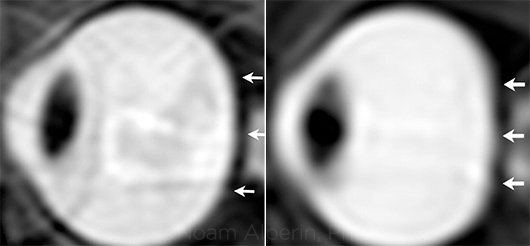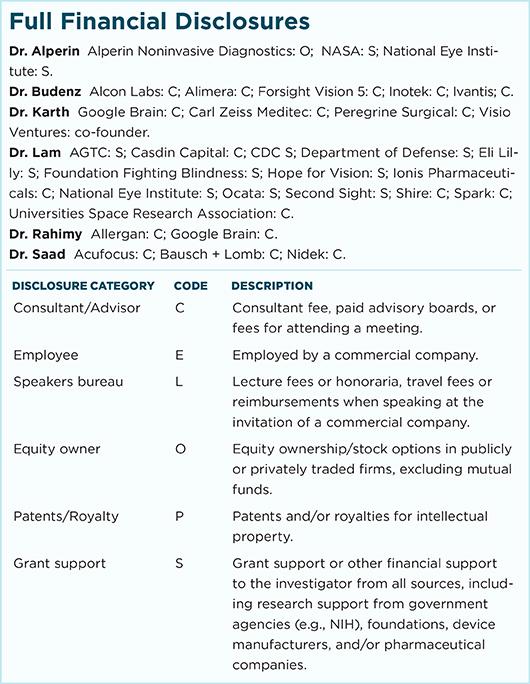Download PDF
After spending several months in microgravity, a majority of astronauts return to Earth with optic disc edema, posterior globe flattening, and a hyperopic shift in visual acuity.
Researchers who first documented these changes—dubbed the visual impairment intracranial pressure (VIIP) syndrome—hypothesized that they might be caused by pressure from venous congestion in the brain and choroid.1 But, according to researchers at the University of Miami, Florida, the culprit appears to be a micro-gravity-induced buildup of cerebrospinal fluid (CSF) in the orbit and ventricles in the brain.2
 |
BEFORE AND AFTER. Sagittal oblique T2-weighted magnetic resonance images of the left eye show the effects of space travel. Left, before space travel. Note convexity of posterior globe (arrows). Right, after long-term exposure to microgravity. Note loss of convexity of the posterior scleral margin (arrows).
|
Effects of excess CSF. High-resolution MRI orbital scans of 7 long-duration astronauts showed that all of them had significantly greater increases in orbital and ventricular CSF volume (p ≤ .005) than did short-duration astronauts, said Noam Alperin, PhD, who presented the results at last fall’s meeting of the Radiological Society of North America.
The excess CSF from long flights was associated with more optic nerve protrusion (p < .00001) and more scleral flattening (p < .00001), said Dr. Alperin, a professor of radiology who heads the university’s Advanced Imaging Processing Laboratory.
“In the astronauts who stayed in the International Space Station for an average of 6 months, there was an accumulation of CSF, and an increase in its volume, in the orbit around the optic nerve. And this compresses the optic nerve and the posterior pole of the globe,” Dr. Alperin said.
Visual consequences—current and future. Dr. Alperin’s coinvestigator in the study is Byron L. Lam, MD, professor of ophthalmology at Bascom Palmer Eye Institute. Dr. Lam said that, based on current reports, “The hyperopic shift is mild and can be compensated with glasses,” adding that further study is needed. “Of course, it is unknown what the consequences of VIIP might be for very long-duration flights to Mars, which could last nearly 1,000 days.”
—Linda Roach
___________________________
1 Mader TH et al. Ophthalmology. 2011;118(10):2058-2069.
2 Alperin N. Role of cerebrospinal fluid in spaceflight-induced visual impairment and ocular changes. Presented at: annual meeting of the Radiological Society of North America; Nov. 28, 2016; Chicago.
___________________________
Relevant financial disclosures—Dr. Alperin: Alperin Noninvasive Diagnostics: O; NASA: S. Dr. Lam: University Space Research Association: C.
For full disclosures and disclosure key, see below.

More from this month’s News in Review